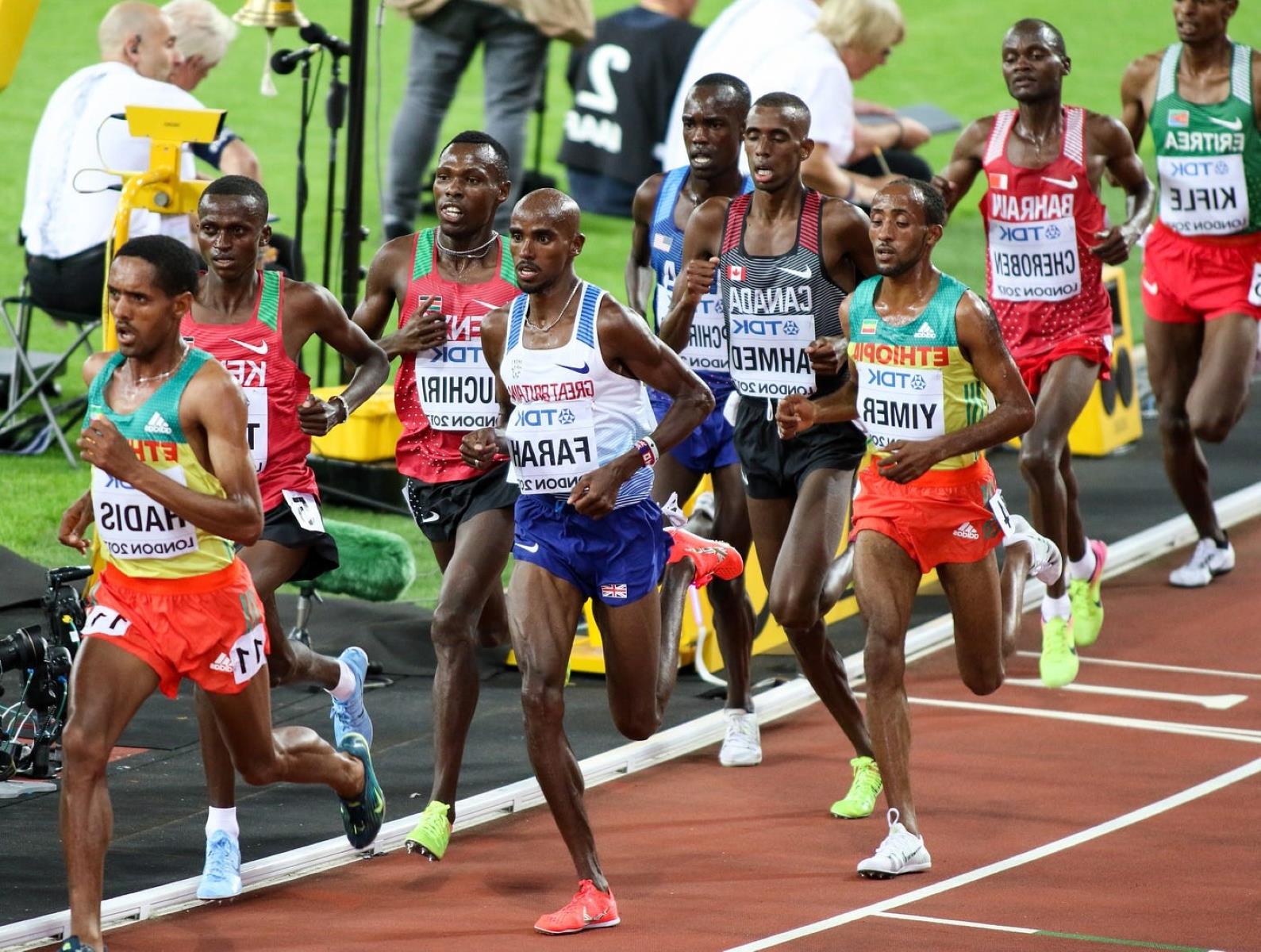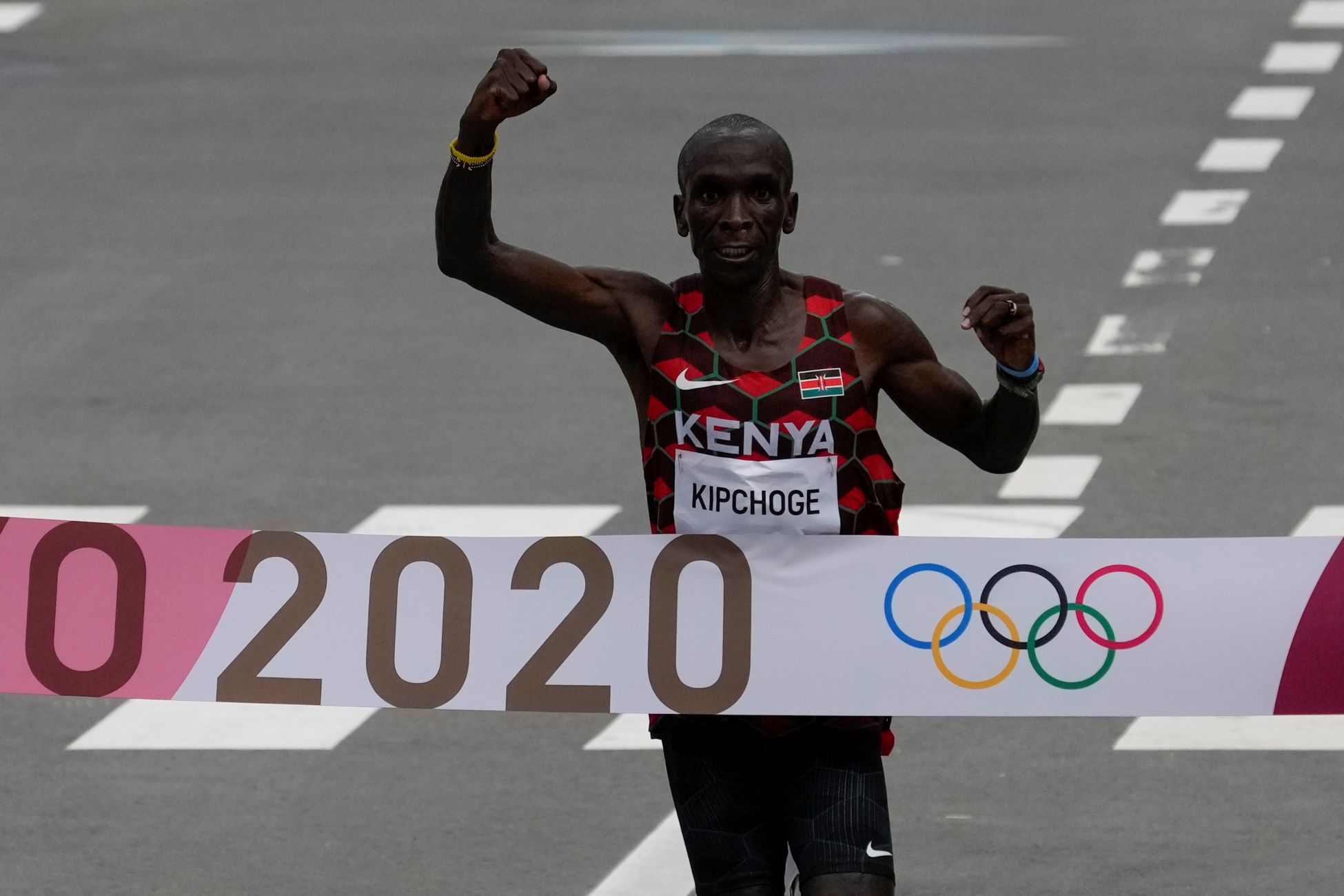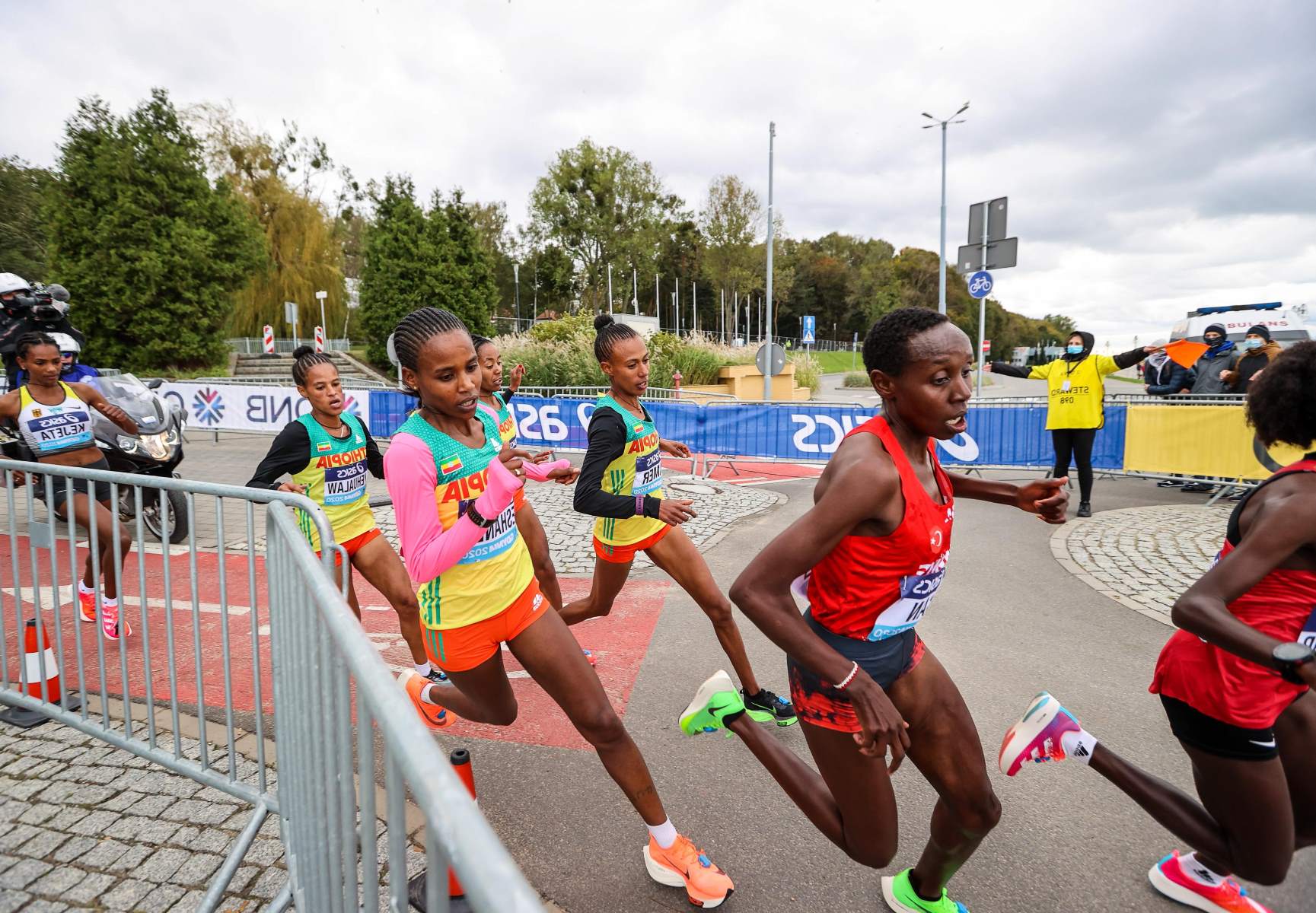Home>Training & Techniques>The Success Of Ethiopian Endurance Runners: What’s The Secret?


Training & Techniques
The Success Of Ethiopian Endurance Runners: What’s The Secret?
Published: March 4, 2024
Discover the training and techniques behind the success of Ethiopian endurance runners. Uncover the secrets to their remarkable achievements.
(Many of the links in this article redirect to a specific reviewed product. Your purchase of these products through affiliate links helps to generate commission for Therunningadvisor.com, at no extra cost. Learn more)
Table of Contents
- The Rise of Ethiopian Endurance Runners
- The Role of Genetics in Ethiopian Endurance Running Success
- The Impact of Environment and Culture on Ethiopian Endurance Runners
- The Training and Diet Regimen of Ethiopian Endurance Runners
- The Mental and Psychological Factors Contributing to Ethiopian Endurance Running Success
The Rise of Ethiopian Endurance Runners
The global stage of endurance running has been dominated by Ethiopian athletes, who have consistently showcased remarkable performances in long-distance running events. The rise of Ethiopian endurance runners to the forefront of the sport has been nothing short of extraordinary. Their unparalleled success has sparked widespread curiosity and admiration, prompting many to ponder the underlying factors that have propelled these athletes to the zenith of long-distance running.
Ethiopia's emergence as a powerhouse in endurance running can be attributed to a combination of genetic predisposition, environmental influences, cultural traditions, and rigorous training regimens. These multifaceted elements have converged to create an environment conducive to producing world-class endurance runners.
The remarkable rise of Ethiopian endurance runners is a testament to the country's rich heritage and deep-rooted passion for running. The enduring legacy of legendary Ethiopian runners such as Haile Gebrselassie and Kenenisa Bekele has inspired a new generation of athletes to pursue excellence in long-distance running. The collective determination and unwavering commitment of Ethiopian runners have propelled them to the forefront of the global running community.
Ethiopia's high altitude and rugged terrain have played a pivotal role in shaping the physical capabilities of its endurance runners. The challenging landscapes and thin air have honed the athletes' cardiovascular endurance and lung capacity, providing them with a natural advantage in long-distance running events. Moreover, the cultural significance of running in Ethiopian society has fostered a deep-seated passion for the sport, driving aspiring athletes to pursue their dreams with unwavering dedication.
The rise of Ethiopian endurance runners is a testament to the profound impact of genetics, environment, culture, and relentless determination in shaping the trajectory of athletic success. As Ethiopian athletes continue to captivate the world with their extraordinary feats, their remarkable journey serves as a source of inspiration and admiration for aspiring runners worldwide.
Read more: The Secrets Of A Running Expert’s Endurance
The Role of Genetics in Ethiopian Endurance Running Success
The unparalleled success of Ethiopian endurance runners can be attributed, in part, to the role of genetics in shaping their exceptional athletic prowess. Ethiopian athletes have long been revered for their remarkable endurance and unparalleled ability to excel in long-distance running events. This extraordinary athletic prowess is underpinned by a genetic predisposition that endows these runners with unique physiological advantages, setting them apart as formidable competitors on the global stage.
At the core of Ethiopian endurance running success lies a genetic predisposition that encompasses a myriad of physiological attributes conducive to excelling in long-distance running. One of the key genetic factors contributing to their success is the prevalence of a specific variant of the ACE gene, known as the "sprinter gene." This genetic variation has been found to be less common among Ethiopian endurance runners, thereby conferring them with a distinct advantage in endurance events. Additionally, Ethiopian athletes exhibit a higher proportion of slow-twitch muscle fibers, which are essential for sustained aerobic performance, thus contributing to their exceptional endurance capabilities.
Moreover, Ethiopian endurance runners possess a unique hemoglobin profile characterized by a higher concentration of red blood cells and increased hemoglobin mass. This genetic predisposition enhances their oxygen-carrying capacity, enabling superior oxygen utilization during prolonged physical exertion. The combination of elevated hemoglobin levels and enhanced oxygen transport efficiency equips Ethiopian athletes with a remarkable ability to sustain high-intensity endurance efforts, a defining trait that sets them apart in long-distance running competitions.
Furthermore, the genetic diversity within Ethiopia's diverse population has contributed to the emergence of exceptional endurance runners with a wide spectrum of physiological adaptations. The intricate interplay of genetic factors, including altitude adaptation and thermoregulatory mechanisms, has endowed Ethiopian athletes with a unique set of attributes that optimize their performance in the demanding realm of endurance running.
In essence, the genetic predisposition of Ethiopian endurance runners encompasses a complex interplay of physiological traits that collectively confer them with a formidable advantage in long-distance running events. This intrinsic genetic advantage, coupled with unwavering dedication and rigorous training, has propelled Ethiopian athletes to the forefront of endurance running, solidifying their status as global trailblazers in the realm of long-distance running.
The Impact of Environment and Culture on Ethiopian Endurance Runners
The remarkable success of Ethiopian endurance runners is profoundly influenced by the interplay of their natural environment and rich cultural heritage. Ethiopia's rugged terrain, high altitude, and diverse climatic conditions have significantly shaped the physical capabilities and endurance prowess of its athletes. The challenging landscapes, characterized by undulating hills, mountainous regions, and high-altitude plateaus, have served as a natural training ground for Ethiopian runners, honing their cardiovascular endurance and fortifying their resilience in the face of arduous long-distance races.
The high-altitude environment prevalent in Ethiopia has been instrumental in fostering the development of exceptional endurance runners. The thin air at higher elevations stimulates physiological adaptations, prompting the body to produce a higher concentration of red blood cells and enhance oxygen-carrying capacity. This natural acclimatization to high-altitude conditions confers Ethiopian athletes with a distinct advantage in endurance events, enabling them to excel in competitions that demand sustained aerobic performance.
Furthermore, the cultural significance of running in Ethiopian society permeates every facet of daily life, reflecting a deep-rooted passion for the sport. Running holds profound cultural significance, with long-distance races embedded in traditional ceremonies and celebrations. This cultural reverence for running has instilled a deep sense of purpose and pride in Ethiopian endurance runners, propelling them to pursue excellence with unwavering determination.
The communal ethos of collective training and mutual support prevalent in Ethiopian running culture has fostered a spirit of camaraderie and unity among athletes. The tradition of communal training sessions, where runners converge to train together in a spirit of solidarity, has cultivated a supportive network that nurtures the growth and development of aspiring athletes. This collaborative approach to training not only fosters a sense of belonging and camaraderie but also instills a collective drive for excellence, propelling Ethiopian runners to push the boundaries of endurance and achieve remarkable feats on the global stage.
In essence, the impact of Ethiopia's natural environment and rich cultural heritage on its endurance runners is profound and multifaceted. The symbiotic relationship between the challenging terrain, high-altitude conditions, and cultural reverence for running has sculpted a generation of exceptional athletes who embody unwavering resilience, unparalleled endurance, and an indomitable spirit. This unique amalgamation of environmental influences and cultural traditions has propelled Ethiopian endurance runners to the forefront of long-distance running, cementing their status as global trailblazers in the realm of endurance sports.
The Training and Diet Regimen of Ethiopian Endurance Runners
The training and diet regimen of Ethiopian endurance runners is characterized by a holistic approach that encompasses rigorous physical conditioning, strategic training methodologies, and a nutritionally balanced diet tailored to optimize performance and recovery. At the heart of their training regimen lies a relentless dedication to honing their endurance, speed, and mental fortitude, while their dietary practices are meticulously designed to fuel their demanding training schedules and sustain peak athletic performance.
Training Regimen
Ethiopian endurance runners adhere to a disciplined training regimen that encompasses a diverse array of running workouts, strength training, and cross-training activities. Long-distance runs form the cornerstone of their training, allowing them to build aerobic capacity, enhance endurance, and develop the mental resilience required for grueling races. Interval training, hill repeats, and tempo runs are integrated to improve speed, agility, and lactate threshold, thereby fortifying their ability to sustain high-intensity efforts during races. Additionally, strength training exercises, plyometrics, and flexibility drills are incorporated to bolster muscular strength, power, and injury prevention. The comprehensive training regimen is meticulously structured to optimize performance across varying terrains and race distances, ensuring that Ethiopian endurance runners are well-equipped to excel in the dynamic landscape of long-distance running.
Diet Regimen
The dietary practices of Ethiopian endurance runners are centered around nourishing their bodies with a balanced and nutrient-rich assortment of foods that support their rigorous training and aid in post-exercise recovery. A staple of their diet includes complex carbohydrates such as injera, a traditional Ethiopian flatbread, which serves as a vital source of sustained energy for their demanding training sessions and races. Additionally, lean proteins from sources such as lentils, chickpeas, and lean meats are consumed to facilitate muscle repair and growth. The inclusion of ample fruits and vegetables provides essential vitamins, minerals, and antioxidants that bolster immune function and aid in the repair of cellular damage incurred during intense training. Hydration is prioritized, with runners diligently maintaining optimal fluid intake to support performance and aid in the regulation of body temperature during training and competition.
The meticulous integration of a comprehensive training regimen and a nutrient-dense diet underscores the unwavering commitment of Ethiopian endurance runners to optimize their athletic capabilities and achieve peak performance. This holistic approach to training and nutrition not only cultivates physical resilience and endurance but also fosters a mindset of unwavering dedication and relentless pursuit of excellence, propelling Ethiopian athletes to the forefront of long-distance running on the global stage.
The Mental and Psychological Factors Contributing to Ethiopian Endurance Running Success
The unparalleled success of Ethiopian endurance runners is underpinned by a myriad of mental and psychological factors that collectively contribute to their remarkable achievements in long-distance running. At the core of their success lies a profound mental resilience, unwavering determination, and an indomitable spirit that transcends the physical demands of the sport. The mental fortitude exhibited by Ethiopian athletes is a defining attribute that propels them to conquer formidable challenges and surpass perceived limitations, cementing their status as global trailblazers in the realm of endurance running.
Resilience and Grit
Ethiopian endurance runners exemplify an extraordinary level of resilience and grit, navigating the grueling demands of long-distance running with unwavering determination and fortitude. The ability to endure physical discomfort, surmount mental barriers, and persist in the face of adversity is a hallmark of their mental tenacity. This resilience enables them to push through the rigors of training, overcome race-day challenges, and maintain unwavering focus on their pursuit of excellence.
Mental Toughness and Focus
The mental toughness displayed by Ethiopian endurance runners is instrumental in their ability to sustain peak performance over extended distances. Their capacity to maintain unwavering focus, block out distractions, and channel their mental energy towards the attainment of their athletic goals is a testament to their formidable psychological prowess. This unwavering focus allows them to navigate the ebb and flow of long-distance races, surmount mental fatigue, and summon reserves of inner strength to propel them towards the finish line.
Read more: Unlocking The Secrets Of Running Pace
Determination and Perseverance
The unyielding determination and perseverance exhibited by Ethiopian endurance runners are integral to their success in the realm of long-distance running. Their relentless pursuit of excellence, unwavering commitment to their training regimen, and resolute mindset in the face of adversity exemplify the depth of their psychological resolve. This unwavering determination fuels their pursuit of greatness, propelling them to conquer formidable challenges and achieve extraordinary feats on the global stage.
Mental Preparation and Visualization
Ethiopian endurance runners employ meticulous mental preparation and visualization techniques to cultivate a winning mindset and optimize their performance. Visualization exercises enable them to mentally rehearse race scenarios, envision success, and cultivate a sense of familiarity with the challenges they may encounter. This mental rehearsal equips them with the psychological tools to navigate race-day dynamics, overcome obstacles, and harness the power of positive visualization to propel them towards their athletic aspirations.
In essence, the mental and psychological factors underpinning the success of Ethiopian endurance runners encompass a profound resilience, unwavering determination, mental toughness, and meticulous mental preparation. These psychological attributes collectively fortify their capacity to excel in the demanding realm of long-distance running, underscoring the pivotal role of mental fortitude in shaping their extraordinary achievements on the global stage.














